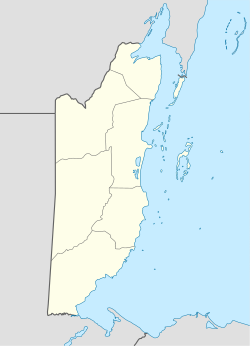Grace Bank Barcadares | |
|---|---|
Hamlet | |
 Illustration from 1889 Sparks from the camp fire by C. S. Greene. | |
| Etymology: embarcadero | |
| Coordinates: 17°39′04″N88°23′59″W / 17.651079886603995°N 88.39969159699486°W | |
| Country | Belize |
| District | Belize |
| Settled | 1650s (as capital) |
| Relocated | 1760 (to St. George's Caye) |
| Resettled | 1763 (as hamlet) |
| Renamed | 19th cent. (Grace Bank) |
| Named after | an embarcadero(former) resident named Grace(current) |
| Government | |
| • Type | Town meeting (to 1760) Unincorporated hamlet (1763–present) |
| • Body | Public meeting (to 1760) None (1763–present) |
| Area | |
• Total | 1 sq mi (3 km2) |
| • Land | 0.4 sq mi (1 km2) |
| • Water | 0.6 sq mi (2 km2) |
| Elevation | 15 ft (5 m) |
| Population (2010) | |
• Total | 49 |
| • Density | 49/sq mi (19/km2) |
| Demonym | Baymen (formerly) |
| Time zone | UTC−6 (GMT−6) |
Grace Bank, formerly Barcadares, is an unincorporated hamlet 33 miles up the Belize River. It was the second settlement founded by the first English settlers of present-day Belize. It was settled in the 1650s, relocated in 1760, and resettled in 1853.

